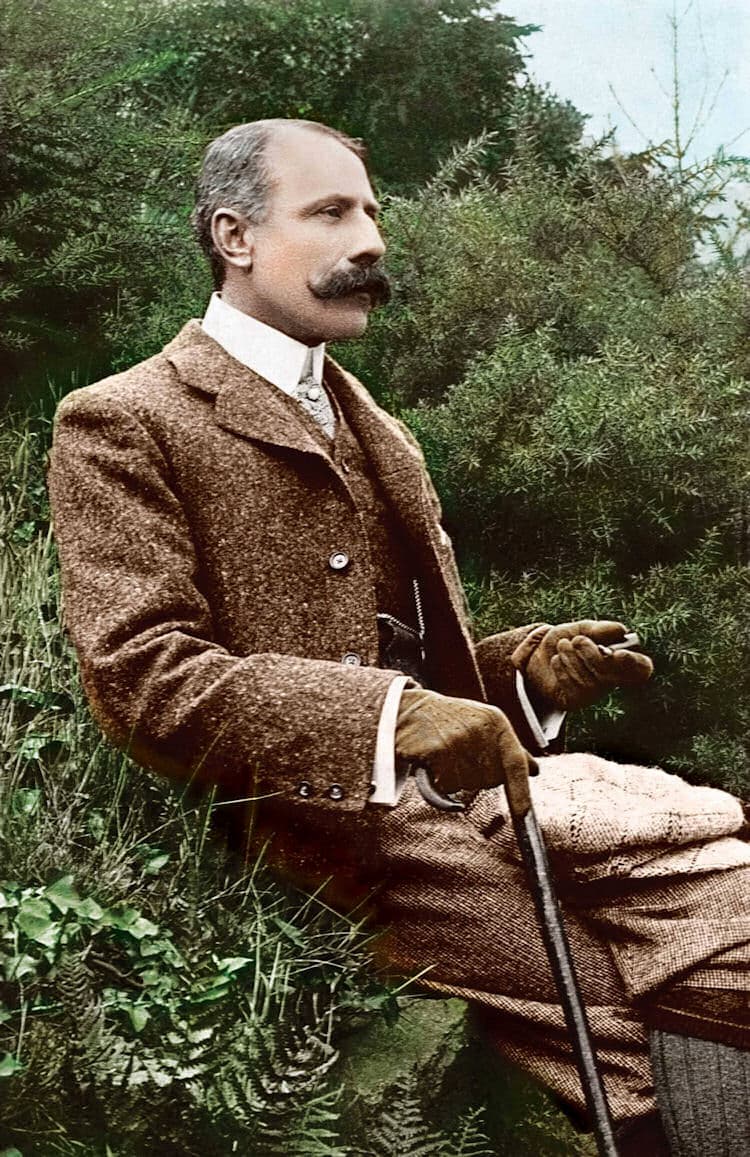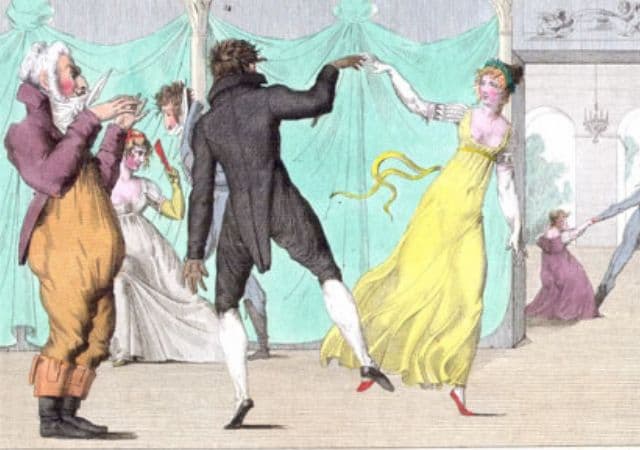English composer Edward Elgar (1857–1934) wrote his Three Characteristic Pieces in 1899, revising an earlier Suite in D. The first movement is the very Polish mazurka, a work in triple meter with a quick tempo. The mazurka was a stylized development of a triple-meter folk dance. The genre had been popularized by Chopin, who wrote 59 mazurkas. Orchestral mazurkas are not very common, and it’s interesting to see how Elgar triumphs at this. Elgar also made an arrangement for violin and piano.

Edward Elgar
Edward Elgar: 3 Characteristic Pieces, Op. 10 – No. 1. Mazurka (New Zealand Symphony Orchestra; James Judd, cond.)
The second piece started life as a Sérénade mauresque, i.e., a Moorish serenade. It starts in a quiet, exotic manner but then seems to wander to the colder north, becoming much more English in the central section.
Edward Elgar: 3 Characteristic Pieces, Op. 10 – No. 2. Sérénade mauresque (New Zealand Symphony Orchestra; James Judd, cond.)
The final movement, with the title Contrasts, has a further clarifying subtitle: The Gavotte A.D.1700 and 1900.

The Gavotte
Elgar explained this in a letter to August Jaeger (Nimrod in the Enigma Variations) as being inspired by a dance performance he saw in Germany:
I saw two dancers once in Leipzig who came down the stage in antique dress dancing a gavotte: when they reached the footlights they suddenly turned round & appeared to be two very young & modern people & danced a gay & lively measure … They had come down the stage backwards & danced away with their (modern) faces towards us: when they reached the back of the stage they suddenly turned round & the old decrepit couple danced gingerly to the old tune.
The work starts in a lovely Baroque style before jumping ahead two centuries to something much more modern.
Edward Elgar: 3 Characteristic Pieces, Op. 10 – No. 3. Contrasts: The Gavotte A.D.1700 and 1900 (London Philharmonic Orchestra; Edward Elgar, cond.)
The gavotte comes from the Renaissance and was popular at the court of Louis XIV. Modern Gavottes have been written by Edvard Grieg (in his suite From Holberg’s Time), Stravinsky (in his ballet Pulcinella), Prokofiev (In his Classical Symphony and elsewhere), and by Leonard Bernstein (in Candide). In every case, except Elgar’s, they were used to represent an older time or the past. Elgar uses it in that sense and then jumps us 200 years forward.
For more of the best in classical music, sign up for our E-Newsletter



